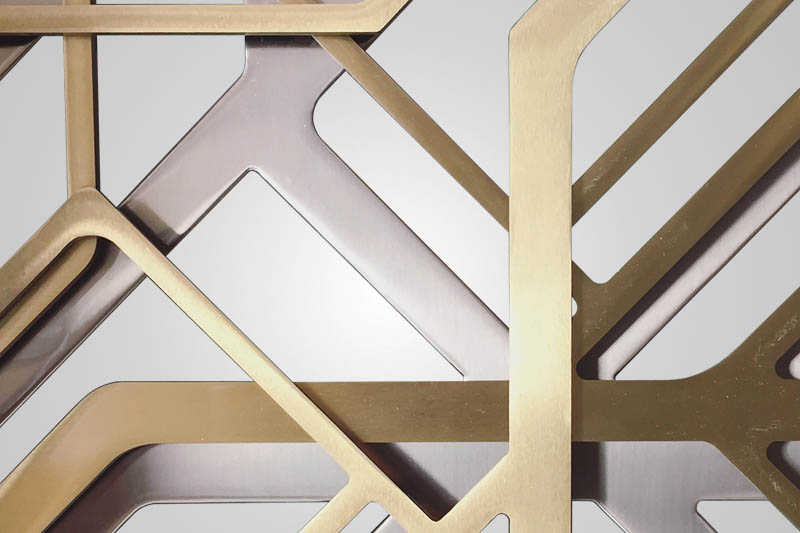In the realm of architecture, the art of metal engraving stands as a testament to both tradition and innovation. As architects and designers continuously seek ways to infuse uniqueness and precision into their projects, metal engraving emerges as a powerful tool. This technique not only adds aesthetic value but also enhances the durability and functionality of architectural designs.

Understanding Metal Engraving
Metal engraving is a process that involves the etching or carving of intricate designs onto metal surfaces. This technique has been used for centuries to create detailed artwork, inscriptions, and patterns on various metal surfaces. In the context of architectural projects, it offers an opportunity to integrate artistic elements into structural components.
The Historical Significance of Metal Engraving
The history of metal engraving dates back to ancient civilizations where artisans used simple tools to carve designs into metal surfaces. Over time, it evolved into a sophisticated art form, playing a crucial role in the development of architectural styles. From the grand facades of Gothic cathedrals to the ornate details of Baroque buildings, metal engraving has left an indelible mark on architectural history.
Modern Applications of Metal Engraving in Architecture
Today, metal engraving continues to be a vital component of architectural design. Its applications range from creating intricate facades and decorative panels to producing signage and wayfinding systems. By incorporating engraved metal elements, architects can achieve a blend of traditional craftsmanship and contemporary design.
Benefits of Metal Engraving in Architectural Projects
The use of metal engraving in architectural projects offers numerous benefits:
Enhanced Aesthetic Appeal
Engraved metal elements add a layer of sophistication and elegance to buildings. The play of light and shadow on engraved surfaces creates dynamic visual effects, enhancing the overall aesthetic appeal of the structure.
Durability and Longevity
Metals such as stainless steel, brass, and aluminum are commonly used for engraving due to their durability and resistance to environmental factors. This ensures that the engraved designs remain intact for decades, providing long-lasting beauty.
Customization and Personalization
Metal engraving allows for a high degree of customization, enabling architects to tailor designs to suit specific project requirements. Whether it’s a company logo, intricate patterns, or personalized inscriptions, engraving offers endless possibilities.
Techniques and Tools Used in Metal Engraving
The art of metal engraving involves various techniques and tools, each suited for different types of projects:
Traditional Hand Engraving
This technique involves the use of hand tools such as gravers and chisels to carve designs into metal surfaces. While labor-intensive, hand engraving offers unparalleled precision and detail.
Machine Engraving
Advancements in technology have led to the development of machine engraving, which utilizes CNC machines and laser engravers to produce intricate designs with speed and accuracy. This method is ideal for large-scale architectural projects.
Etching
Etching involves using acid or other chemicals to remove specific areas of the metal surface, creating a design. This technique is commonly used for producing detailed patterns and textures.
Choosing the Right Metal for Engraving
The choice of metal is crucial in metal engraving for architectural projects. Commonly used metals include:
Stainless Steel
Known for its strength and corrosion resistance, stainless steel is a popular choice for exterior architectural elements.
Brass
With its warm, golden hue, brass adds a touch of elegance and is often used for decorative elements.
Aluminum
Lightweight and versatile, aluminum is suitable for a wide range of applications, including signage and panels.
For more insights on common metals used in architectural projects, you can visit this resource.
Case Studies: Successful Metal Engraving Projects
Several architectural projects have successfully integrated metal engraving to create stunning visual effects:
The Louvre Abu Dhabi
The museum features an intricate lattice dome with engraved patterns that filter sunlight, creating a play of light and shadow reminiscent of traditional Arabic architecture.
The Hearst Tower, New York
This iconic skyscraper incorporates engraved stainless steel panels in its facade, adding depth and texture to its modern design.
Integrating Metal Engraving with Architectural Metal Louvers
Architectural metal louvers are often combined with engraved metal elements to enhance both aesthetics and functionality. Engraved louvers can serve as sunshades, reducing glare while contributing to the building’s visual appeal. Learn more about architectural metal louvers here.
How to Choose the Right Metal Fabricator
Choosing the right fabricator is crucial for successful metal engraving projects. Factors to consider include:
Experience and Expertise
Look for fabricators with a proven track record in metal engraving for architectural projects.
Technology and Equipment
Ensure the fabricator uses advanced equipment and techniques to achieve precision and quality.
For more tips on selecting a fabricator, visit this guide.
Future Trends in Metal Engraving for Architecture
As technology continues to advance, metal engraving is set to evolve in exciting ways. Emerging trends include:
Integration with Smart Technology
Engraved metal surfaces may soon incorporate smart features, such as interactive displays and sensors.
Eco-Friendly Practices
The use of sustainable materials and techniques is becoming increasingly important in architectural projects.

FAQs
What is the best metal for engraving in architectural projects?
Stainless steel is often preferred for its durability and resistance to corrosion, making it ideal for exterior applications.
How long does a typical metal engraving project take?
The duration varies depending on the project’s complexity, but machine engraving can significantly reduce production time.
Can metal engraving be used for custom signage?
Yes, metal engraving is a popular choice for creating custom signage due to its precision and aesthetic appeal.
To explore more about architectural metal design, you can check out this article.
For a deeper understanding of architectural metal fabrication, visit here.
This article contains affiliate links. We may earn a commission at no extra cost to you.

